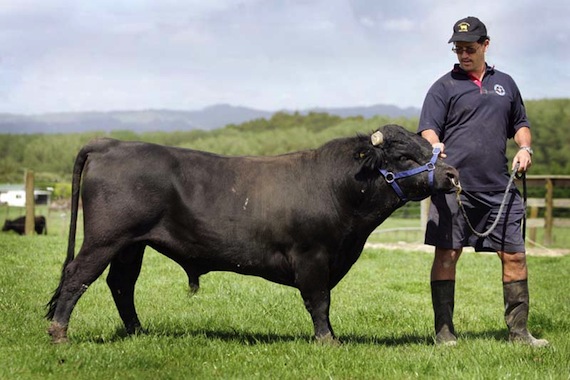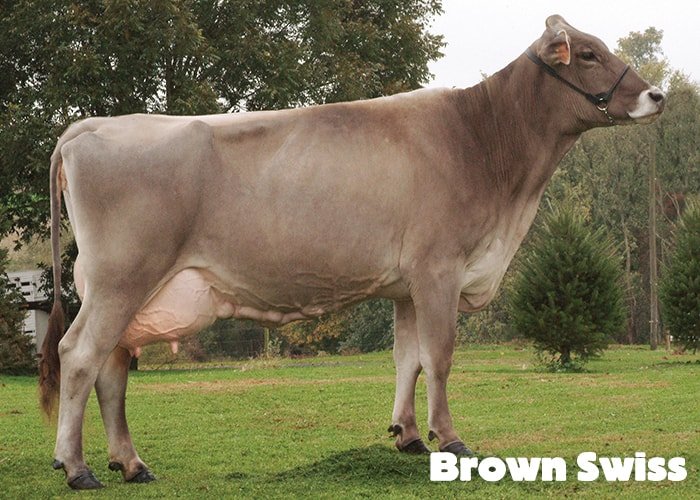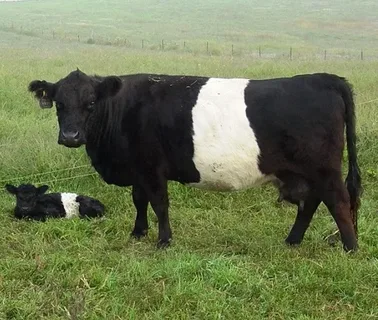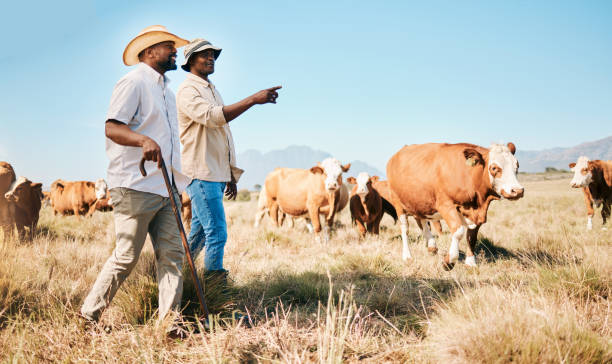If you’ve been around farms long enough, you’ve probably seen big Angus cattle filling up pastures and feedlots. But what if I told you there’s a smaller version that brings just as much beef quality and even more efficiency? Meet the Lowline Angus—a compact cattle breed that packs all the whistles without the extra weight. These little powerhouses are changing the way small-scale farmers and ranchers think about beef production. They’re not just small for show. They’re productive, thrifty, and surprisingly tough.
I remember the first time I saw a Lowline Angus. I almost laughed. “That’s it?” I thought. They looked like someone had shrunk a full-size Angus in the wash. But after talking to the farmer who raised them, I realized these cattle weren’t a joke at all. They were smart business. He was producing premium beef on less land, feeding less grain, and still turning a tidy profit. His Lowline bulls were gentle, easy to handle, and perfect for rotational grazing setups. That day, I stopped underestimating smaller breeds.
What’s fascinating is that Lowlines aren’t a gimmick or a new designer breed. They’re true Angus, just naturally smaller. Their story began in Australia when researchers were trying to study how size affected efficiency in beef production. What they found turned into a revolution—these smaller Angus animals converted feed better, required less space, and still delivered incredible beef quality. Since then, Lowline Angus cattle have spread worldwide, earning fans from small hobby farmers to serious commercial producers.
The Birth of a Compact Powerhouse
The Lowline Angus story started in the 1970s at the Trangie Agricultural Research Centre in New South Wales, Australia. Scientists there were experimenting with selective breeding to understand how smaller cattle compared to standard Angus in performance. Over generations, they found that these “low line” cattle were not only efficient but also hardy and consistent. When the research program ended in the early 1990s, farmers quickly realized the commercial potential and kept breeding them.
Today, Lowlines are a recognized beef breed in their own right. They carry all the genetics and marbling qualities of full-sized Angus but come in a smaller, more manageable package. You could say they’re Angus on a practical scale—perfect for today’s smaller farms, where land and feed aren’t always abundant.
Why Lowline Angus Fits Modern Farming
Raising livestock today is about balance. You want quality meat, manageable animals, and sustainable costs. That’s where Lowlines shine. They thrive on modest feed and smaller acreage. A few acres that might barely support one traditional Angus cow can sustain two or even three Lowlines comfortably. Their smaller size also means less soil compaction and better pasture health over time.
Farmers working in hilly or less fertile regions especially appreciate that. Lowlines graze efficiently without tearing up land or stripping vegetation. They’re the kind of cattle you can trust to look after themselves and still thrive.
Lowline Bulls – Small But Mighty
Let’s talk about the real stars of the show: lowline bulls. They’re compact but incredibly muscular, carrying that classic Angus build in a more condensed frame. I’ve worked with a few bulls in my time—some gentle, others not so much—but Lowline bulls? They’re among the calmest I’ve met. That temperament alone is worth its weight in gold if you’ve ever had to wrangle a full-sized, bad-tempered bull in muddy weather.
Lowline bulls are also known for passing on their efficient growth traits to offspring, even when crossed with larger breeds. So if you’re looking to downsize your herd without sacrificing beef quality, introducing a Lowline bull might be the smartest step you’ll ever take.
A Beef Lover’s Dream Come True
Don’t let their smaller size fool you—the flavor is big. Lowline beef rivals, and often beats, standard Angus when it comes to tenderness and marbling. Because these cattle grow naturally and aren’t pushed for fast gains, their meat develops slowly, giving it that old-fashioned, rich flavor that’s hard to find in commercial beef today.
One of my favorite moments as a farmer came the first time I grilled a Lowline ribeye from my own pasture-raised steer. The aroma was different—deeper somehow. And the taste? Absolutely melt-in-your-mouth good. It reminded me of what beef used to taste like before feedlots took over. That’s when I knew these compact cattle had earned a permanent place on my farm.
Perfect for Small Acreages
If you’re working with limited land or just starting out in livestock, Lowlines are a godsend. Their smaller frame—usually about 40 to 60 percent the size of traditional Angus—makes them ideal for intensive grazing systems. You can raise more animals per acre without overgrazing, which means more efficiency and healthier soil.
They also adapt beautifully to a variety of climates. Whether it’s hot summers or chilly winters, Lowlines handle it well. Their efficient metabolism and calm nature make them steady, low-maintenance companions on any small farm.
How to Care for Lowline Angus Cattle
Caring for Lowlines isn’t complicated. They’re one of the most forgiving breeds you can raise. Here’s what works best for me:
1. Pasture and Feed:
Good-quality grass is all they need most of the year. They thrive on rotational grazing systems. During dry spells or winter, supplement with hay. Avoid excessive grain—it’s unnecessary and costly.
2. Shelter and Space:
They don’t require fancy housing, but a simple shed or windbreak keeps them comfortable. Make sure they have access to clean water and shade in hot weather.
3. Health Management:
Routine deworming and vaccinations are enough. Lowlines are generally hardy and rarely face calving issues, which makes them great for part-time farmers or beginners.
4. Breeding:
Lowline cows calve easily and have strong maternal instincts. If you’re breeding with lowline bulls, expect compact, well-proportioned calves that grow quickly without special feeding.
5. Handling:
Because of their calm disposition, they’re easy to move and manage. Even a small setup with basic fencing is often enough.
Real-Life Scenario: A Farm That Switched
A friend of mine, Mike, runs a 20-acre farm in the Midwest. He used to raise Herefords but found the feed costs climbing every year. After switching to Lowline Angus, he cut his expenses nearly in half and started selling premium grass-fed beef locally. The smaller carcasses were a hit with families who didn’t want giant freezer portions. Within two years, he’d built a steady customer base and doubled his profit margin. The best part? He said managing them was “like working with big dogs—smart and easygoing.”
Common Questions About Lowline Angus
Do Lowlines produce less beef because they’re smaller?
They produce smaller carcasses, yes, but per acre, they’re just as efficient—or better—because you can raise more of them on the same land.
Are Lowlines suitable for beginners?
Absolutely. Their gentle nature and low maintenance make them perfect for first-time farmers or anyone wanting a manageable herd.
Can Lowlines crossbreed with other cattle?
Yes, and that’s one of their biggest advantages. Crossing a lowline bull with larger cows often produces mid-sized, highly efficient calves.
How much do Lowline Angus cattle weigh?
Cows average around 800–1000 pounds, and bulls typically range from 1200–1500 pounds. They’re compact but well-built.
Do Lowlines need special fencing or facilities?
Not at all. Standard fencing works fine. Their calm temperament means they’re less likely to test boundaries than some breeds.
The Future of Compact Cattle
Lowline Angus represents a quiet revolution in farming. They fit today’s needs—efficient, sustainable, and adaptable. As land becomes more expensive and farmers look for smarter ways to produce quality meat, Lowlines offer an answer rooted in simplicity and strength. They’re proof that smaller can still mean powerful.
The best part? They give small-scale farmers a fair shot at raising premium beef without huge infrastructure or massive herds. For many, that’s the difference between struggling and thriving.
Thinking About Getting Started?
If you’re considering adding cattle to your farm, don’t overlook Lowlines. Visit a breeder, attend a small livestock expo, or talk to someone who’s already raising them. You’ll be surprised how much you can learn just by spending an afternoon around these compact wonders.
And when you finally see a group of lowline bulls grazing quietly in a green field, you’ll understand the magic. They’re peaceful, efficient, and built for the future of farming.
Final Thoughts
Raising Lowline Angus cattle has been one of the best farming decisions I’ve made. They’ve shown me that success doesn’t always mean going bigger—it often means getting smarter. These cattle deliver all the essentials—quality beef, gentle temperament, and easy management—without the unnecessary extras.
If you want livestock that works with your land and not against it, Lowlines might be your perfect match. So, what’s stopping you from giving these compact champions a place on your farm?



